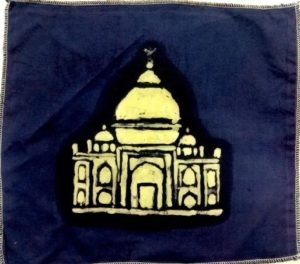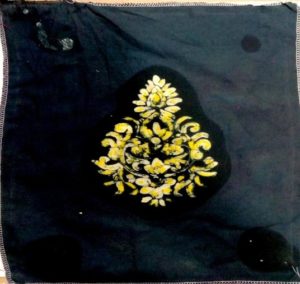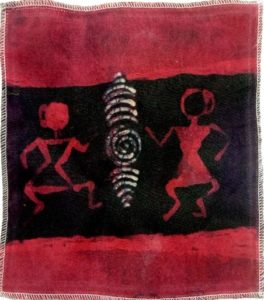By,
Nidhi Krishna (Student)
B.Design (Textile Design)
Dr. Sakshi Shail (Assistant Professor)
Satyam Fashion Institute
Batik is one of the world’s oldest living crafts and art forms. It has survived so long, adapting and evolving along the way, and still is made in many parts of the world, by both traditional and contemporary means and suggests, it has some wisdom to yield about sustainability.The design and development of the khadi fabric using batik design, paraffin wax, azoic dyes, khadi fabric were used the traditional batik technique. Batik literally means ‘wax writing’. Batik work is limited, mainly in Naphthol color and partly in solubilized vat dye; it is applied to the fabric in cold condition. The excellence of batik word is, its natural creation of crack design with the help of wax, which is a good resisting material.Batik was traditionally only done on cotton and silk, but nowadays other materials like georgette and crepe are also used. In recent years, ethnic prints and fabrics have become extremely trendy in western fashion and Batik is no exception.
The value addition to batik print on Khadi fabric which is usually woven from cotton and may also include silk or wool. Khadi is being promoted by Government of Indian nowadays and batik is also popular in recent trends, which has made an effort to use the traditional floral motifs, warli art motifs and geometrical motifs inspired from Indian monuments for the batik printing. The possible variable was kept in mind and the numbers of samples were prepared and a survey has been conducted.
The specific objectives of this topic are to know and compare the traditional natural or floral motifs, geometrical motifs and Warli art motifs.
METHOD AND MATERIAL
Batik is a “resist” process for making designs on fabric. The artist uses wax to prevent dye from penetrating the cloth, leaving “blank” areas in the dyed fabric. The process, wax resist then dye, can be repeated over and over to create complex multicolored designs.
Innovative motifs
- Natural motifs inspired from the nature such as leaves and flowers.
- Warli art motifs inspired from warli art of Maharashtra.
- Geometrical motifs inspired from Indian monuments
Waxing process:
The clothes are hung over woodenor bamboo frames and main divisions areoutlined withpencil.
Wax: 60% paraffin wax and 40% bees wax were used. Selection of Dye Naphthol or Azoic dyes were used for the study.The fabric is then dipped in napthol/ azoic dye for 10-15 minutes. Wax removing after completion of waxing and subsequent dyeing processwax was removed by the soap solution heated at 100o C and washed again withcold water and dried.
Samples and Motifs

Indian Monument: These motifs are new in batik , inspired from monuments and the architerctures .this motifs has very good reviews on visual evaluation and data.

Traditional Motifs : Floral patterns are common in Batik, decorating the textiles with curves, colour and looser lines. The basic batik of Java, for example is known as batik kraton, and its motifs are rich in hindu influence such as the revered garuda bird, the sacred lotus flower, the dragon naga and the tree of life.

Warli Art Motifs : Warli art is a beautiful folk art of Maharashtra, traditionally created by the tribal women’s. Tribals are the Warli and Malkhar koli tribes found on the northern outskirts of Mumbai, in Western India.
The motifs which are used in batik printing are simple. Floral patterns are common in Batik, decorating the textiles with curves, color and looser lines. Often, repeating patterns of traditional motifs are used to create the most popular or in-demand Batik patterns, designs and motifs. These can be anything, from simple geometric shapes and lines to abstract stylizations of natural objects such as flowers, fruits or trees, to mythological depictions and religious motifs. The experiment work making slight modification in our traditional motifs and design, we can introduce some new inspirational motifs on sustainable khadi fabric for fashion conscious people. Thus our purpose is to introduce something new in the world of fashion.
This research paper was first publised in Design Quest an Advanced Reasearch Journal on Design, Vol-2 Issue 1, pulished by Satyam Fashion Institute, Noida.